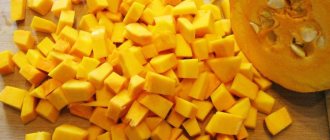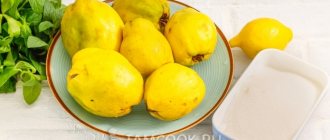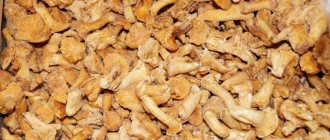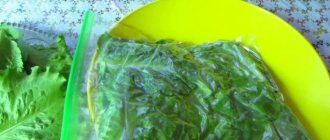Basil is one of the most aromatic herbs and is used in many dishes. Pairs with tomatoes and pasta. Great for salads and a tasty addition to meat dishes and soups. Olive oil is flavored.
Basil is not just an aromatic herb. Relieves gas and colic, supports the digestive system. Improves mood and sleep. It is not for nothing that scientists classify the herb as an adaptogen – herbs that increase the body’s protective functions.
The herb is grown almost all over the world. There are about 150 types of basil. Widely used in Mediterranean cuisine.
The most famous sauce made from basil is Italian pesto sauce. Add the herb to other recipes.
There are several reasons why you should prepare this sauce for the winter.
- Firstly, it is very simple and at the same time incredibly tasty - especially for basil lovers.
- Secondly, it's practical.
- Can be the basis for more sophisticated dishes, such as vegetable lasagne.
One little tip: since the sauce is made from fresh tomatoes, it is better to take fleshy ones that have few seeds. If the tomatoes are watery, adjust the cooking time to obtain the desired thickness of the sauce.
Basil sauce with tomatoes
Required:
- 2 kg tomato
- 1 bunch of basil
- 2 pieces hot chili peppers
- 1 head of garlic
- 2 onions
- 2 tablespoons tomato paste
- 0.5 tablespoons salt
- 1.5 tablespoons sugar
- 1 tablespoon Provençal herbs
- Vegetable oil for frying onions
Take ripe tomatoes. Wash and cut.
Pass through a meat grinder or grind with a blender.
Pour into a saucepan with a thick bottom.
Wash the chili peppers and chop them.
Wash a large bunch of basil (you can use half green and half purple). Dry from water. Divide into 2 parts.
Coarsely chop one part and add to the chili.
Peel the garlic. Add half the cloves to the chili as well.
Grind with a blender. Add to tomatoes.
Add salt and put on the stove.
From the moment it boils, cook for 35-40 minutes, reducing the heat and stirring occasionally.
At this time, peel and chop the onion. Heat vegetable oil and fry until golden brown.
Add to the pan. Stir and cook for 10 minutes.
Pass through a press or grate the remaining garlic on a fine grater.
Finely chop the second half of the basil.
Add sugar, dried Provençal herbs, chopped garlic and basil to the sauce.
Stir and cook for another 10 minutes.
Pour hot into prepared jars. Seal tightly. Turn upside down and leave to cool, covered with a terry towel.
Basil varieties for winter preparations
Basil is conventionally divided into two varieties - purple and green. Varieties with green leaves are characterized by a delicate taste and pleasant aroma, while purple ones are endowed with specific taste qualities.
Varieties are divided according to taste and aroma. Some are ideal for making confectionery, others are added to soft and alcoholic drinks, and others are added to soups and hot dishes.
What flavors are basil varieties rich in:
- the varieties Rosie, Broadleaf Basil, Edwina, Camphor, Aramis, Ruby, Magic of the East, Thai Queen, Baku, Ararat have a peppery taste and aroma;
- clove aroma - Dark Night, Clove, Tulsi, Clove aroma, Sandwich leaf;
- anise smell - Anise Delight, Wonderful Day, Anise Basil, Italian Basil;
- pepper-clove smell - Basilisk, Marquis;
- menthol and lemon aroma - Spark, Velvet, New, Lemon, Lemon;
- vanilla flavor - Vanilla aroma;
- caramel aroma - caramel basil;
- cinnamon smell - Vegetable basil;
- peppermint - Greek.
It’s easy to determine by the name which variety is best suited for a particular dish:
- with lemon, vanilla, caramel, cinnamon aroma - for confectionery, baked goods;
- with anise, menthol, lemon, mint flavor - for drinks;
- with clove and pepper aroma - for meat dishes.
Any of the varieties can be prepared for the winter by freezing, drying, salting, canning in oil and vinegar.
The photo shows green and purple basil.
Basil tomato sauce recipe for the winter
Required:
- 2.2 kg tomatoes
- 200 grams of onions
- 30 grams of garlic
- 100 grams fresh basil
- 30 grams of salt
- 150 grams of sugar
- 170 grams apple cider vinegar
- 6-7 peas of allspice
- 15-20 clove buds
- 1/3 teaspoon black peppercorns
- 0.5 teaspoon mustard seeds
- 0.25 teaspoon cinnamon
- 0.5 teaspoon dried marjoram
- 1 teaspoon paprika
- Hot pepper to taste
Wash the tomatoes. Cut out the stem. If there is damage, also remove. Make a cross-shaped cut on top.
Place in a bowl and pour boiling water over it. Leave for 5 minutes.
Then drain the water and fill it with cold water. Leave for 2-3 minutes. Drain and peel the skin. Slice.
Remove seeds from hot peppers and chop.
Peel the onion and cut into several pieces.
Separate the garlic into cloves and peel.
Wash the basil. Separate the leaves from the stem. Cut in small pieces.
Place the prepared vegetables in a blender and chop. Pour into a saucepan.
Prepare a spicy and aromatic spice mixture. To do this, place the ingredients in a coffee grinder or spice grinder and grind. Pour into a saucepan.
Place the pan on the stove. Add salt and half the required amount of sugar.
Bring to a boil and, reducing the heat, evaporate the liquid to one and a half to two times the original volume.
When the liquid has evaporated, add the remaining sugar and apple cider vinegar. If you don’t have apple cider vinegar, replace it with 100 ml of 9 percent or 2-3 teaspoons of vinegar essence.
After boiling, cook for 20-30 minutes. Once the sauce reaches the desired consistency, add finely chopped basil. Stir and cook for another 5 minutes.
When hot, pour into sterilized dry jars and seal tightly.
Turn the lid down. Cover with a towel and leave until completely cooled.
Preparing the main ingredient
Preparation of the ingredient begins with collecting basil from the garden. Young branches that have not begun to bloom are cut off with scissors. The part of the stem that has not yet become coarse and looks juicy is cut off. In the evening, the bush is watered, and in the morning they begin to harvest, so the plant gains moisture and becomes juicier and softer, especially if it is then frozen.
Collection of workpieces for drying can take place during the daytime in strong sunlight. The bushes are easy to uproot if you do not use scissors, but tear them off with your hands.
After harvesting, the branches of greenery are placed on the table and diseased, dry, rotten leaves are removed; you can not use the branches for harvesting, but tear off only the leaves.
The prepared leaves should be washed several times with warm running water so that no dust, dirt or possible pests remain on them. I put the washed grass on a towel and let it drain for a few minutes, after which it is prepared for one of the types of preparations.
Tomato sauce with basil
Required:
- 4.5 kg fresh tomatoes
- 2 tablespoons chopped basil leaves
- 1 teaspoon dried basil
- Salt to taste
Wash the tomatoes. Cut out the stem and make an incision crosswise. Pour boiling water over and leave for 5-6 minutes.
Then drain the hot water and add cold water.
Peel off the skin.
Cut and clean out the seeds. Grind in a blender.
Pour the resulting puree into a saucepan. Place on the stove, add salt to taste.
Cook over low heat until the liquid has partially evaporated and the puree thickens.
Then rub the sauce through a sieve.
Pour back into the pan, add chopped basil and bring to a boil. Boil for 4-5 minutes.
Pour hot into prepared sterilized jars. Seal tightly and cool, turning upside down.
Store in a cool, dark place, such as a basement.
Freezing
Freezing allows you to preserve a large volume of basil while requiring a minimum of time. There are quite a lot of methods, so you can use any of them.
Fresh herbs are frozen mainly for later use in teas or as a cosmetic product. The blanched method and puree are more often used to prepare raw materials for use in culinary purposes, in the preparation of first and second courses.
Fresh leaves
The easiest way is to freeze fresh herbs; the disadvantage is the need to provide storage space in the freezer. The process is organized using ordinary plastic or special freezing bags; they often use the method of forming “tubes” or ordinary plastic containers.
Special products made of polyethylene for freezing require the presence of clamps that simplify the process. When putting greens into bags for further storage, you need to carefully remove the air inside. This trick will help preserve the herbs better and save space in the freezer.
It is not recommended to place a large amount of greens in a bag; in the future it will be difficult to use the preparation, since the plant cannot be frozen again.
To store them in the form of bunches, the greens are wrapped in plastic wrap and formed into rolls, which are placed in the freezer. When using containers, the seasoning is crushed with a knife and placed in containers, which are sent for storage at sub-zero temperatures.
In order to prepare fresh leaves, use clean, washed and sorted basil leaves, water and molds. The advantage of this method is the ability to preserve the vitamins and beneficial properties of the plant as much as possible.
The process looks like this:
- basil leaves are crushed;
- add greens to a container of water;
- the liquid is mixed and poured into molds;
- containers are placed in the freezer.
The degree of crushing of the leaves can be different; the freezing time depends on the volume of raw materials. On average, water with seasoning freezes within an hour. It is necessary to check the degree of ice formation before removing the containers. Next, the cubes are removed from the molds and stored in plastic bags in the freezer.
Freezing in blanched form
One of the most common problems associated with freezing is the loss of color in the plant's leaves. This can be avoided by using heat. Basil is blanched for 3 seconds, that is, treated with boiling water. You cannot work on delicate greens for a long time, as such actions will lead to their overcooking. Next, the plant is placed on a sheet of parchment and sent to the freezer. After complete freezing, the raw materials are placed in bags and sent for storage in the refrigerator.
See also
TOP 4 recipes for preparing zucchini preparations for winter rollsRead
Freezing Basil Puree
It is convenient to freeze basil in a puree consistency, since this produces concentrated raw materials and the possibility of portion storage. To do this, the greens are processed, placed in cold water for 10 minutes and thoroughly crushed in a blender. The resulting mixture is placed in ice containers, which are kept in the freezer for a certain time.
With olive oil
Freezing with olive oil will help preserve the harvest. This processing of raw materials involves its further use in recipes for the preparation of various sauces in which oil and basil act as ingredients.
The process looks like this:
- the basil is processed, thoroughly washed and sorted;
- grind with a blender;
- add olive oil;
- poured into molds;
- frozen in the refrigerator.
The oil method involves complete freezing until cubes form. They are stored after removal from the molds in a regular plastic bag in a freezer.
Aromatic sauce with tomatoes and basil for pizza and spaghetti
Required:
- 5 kg tomatoes
- 2-3 heads of garlic
- 250 ml olive oil
- 1 large bunch of basil
- Salt and sugar to taste
- Hot black pepper to taste
Wash the tomatoes thoroughly. Then, using a sharp knife, carefully cut the top of each tomato crosswise. Place in boiling water for a few minutes and then in cold water. This makes the tomatoes easy to peel.
Prepare the remaining ingredients.
Chop the tomatoes. Grind the garlic through a press.
Pour olive oil into a large saucepan. Add finely chopped garlic. When you smell the smell, add finely chopped tomatoes to the pan.
Cook until the sauce thickens.
At the end of cooking, add finely chopped basil leaves to the sauce. Season to taste with salt, pepper and sugar.
Pour the prepared sauce into jars and immediately seal. Turn the jars upside down, cover with a blanket and set aside until completely cool.
Choosing a storage location
Depending on which harvesting method you choose, you need to choose the right storage location for it. This could be a refrigerator, a freezer, or a cabinet in the kitchen. But each place has its own characteristics.
At room temperature
Storing an aromatic plant at room temperature is considered the simplest, but short-lived. For this method you don’t need anything other than a glass of water and basil leaves. The shelf life of spices in this form does not exceed 15 days.
The shelf life of fresh spices is 15 days.
Thus, if you want to consume basil fresh, storing it at room temperature is best for you. The main thing to remember is that the room should be cool and the basil should not be exposed to direct sunlight.
In a refrigerator
This is the most suitable place to store basil preparations for the winter in the form of pickling, canning, aromatic oil or basil oil. Fresh basil can be stored in the refrigerator, provided that it will be used in the near future. For short-term storage of fresh leaves, you do not need to wash them; they already have enough moisture.
In the vegetable compartment
This place is also only suitable for short-term storage of basil. It can be packed in a special container or simply wrapped in cling film. This way, greens can remain edible for up to 2 weeks.
In the freezer
This place is intended for long-term storage of workpieces. It can be stored in the freezer for up to one and a half years and will not lose its beneficial properties. There are several ways to properly freeze basil: whole leaves, crushed, or as basil oil in an ice container. The main thing to remember is that you should not defrost the entire frozen product, if you do not need a large amount of it, it is better to break off the required piece. Therefore, if it is re-frozen, it may lose its taste.
Frozen green basil
Whatever storage method and location you choose, you should take care of marking the workpieces in advance - write the date of preparation on stickers or containers. This way you will always see what needs to be eaten first, and what can still stand.
Italian tomato sauce with basil
Required:
- 6 kg tomato
- 1 kg sweet pepper
- 1 pod hot pepper
- 50 grams of garlic
- 1 kg onion
- 100 grams of basil
- 5 bay leaves
- Salt, pepper to taste
Wash the tomatoes. Make a cross on the bottom of the tomatoes and pour boiling water over them. Then peel the peel.
Cut into pieces.
Dice the remaining vegetables. Place in a large saucepan.
Wash the basil and tie with threads. Place allspice, bitter and bay leaves in a canvas bag or tie in gauze. Place in a saucepan.
Place on low heat and cook for 1.5-2 hours.
Remove basil, bay leaf and allspice. Cook for another 15 minutes.
Grind in a blender to a paste.
Then press through a sieve to remove the tomato seeds.
Pour back into the pan. Bring to a boil and pour hot into jars. Roll up and cool.
Useful properties of basil
Basil is a storehouse of useful components and a vitamin that can easily become a leader in enriching the human body, so storing it for the winter is a wise decision. So, basil is rich in vitamins A, C, PP and B2. It also contains carotene, P-rutin and phytoncides. Thanks to such a strong composition, we can say that basil promotes the active functioning of the immune system and helps resist various viruses and infections. Common problems caused by bacteria, viruses, and fungi are less likely to affect the body if basil is consumed on an ongoing basis. It should also be noted that in case of colds, especially during periods of elevated temperature, you should not forget about basil, since this greenery has an antipyretic and diaphoretic effect, which will help overcome the disease as quickly and without complications as possible.
Basil is also an excellent herb that helps turn any food into a delicious dish. That is why the question of the advisability of harvesting basil is omitted; the most relevant are ways to provide your family with basil throughout the winter.
Basil sugo sauce
Required:
- 4 kg tomato
- 1 large bunch of basil
- 3-4 onions
- 3-4 heads of garlic
- 1 chili pepper (or to taste)
- 2 tablespoons sugar
- 8 tablespoons wine vinegar
- Salt, spicy Italian herbs to taste
- Vegetable oil - for frying
Peel and dice the onion.
Wash and chop the tomatoes. Grind using a blender.
Peel and chop the garlic in a blender or pass through a press.
Place the puree on the stove and simmer for 40-60 minutes.
Wash and chop the basil. Take only leaves.
Heat a small amount of oil and fry the onion until golden brown. Add to tomato puree.
Add Italian herbs, red hot pepper, garlic, basil.
Add salt and sugar. Mix.
Then pour in wine vinegar. Stir and cook for 15 minutes from the moment of boiling, reducing the heat.
When hot, pour into sterilized dry jars. Roll up hermetically. Turn the jars upside down. Cover with a blanket and leave until completely cool.
Rules for storing basil in winter
Basil should be stored taking into account the permissible period, which depends on the type of preparation. Frozen products have the longest shelf life. The following rules apply:
- frozen - up to 2 years;
- dried - up to 1 year;
- canned - up to 1 year;
- salted - from 3 to 4 months.
Properly prepared basil can be stored for at least a year. After opening, the jars are stored in the refrigerator. To avoid spoilage, the product is consumed immediately after opening the container, therefore, when preparing preparations, you should not use large-volume containers. Containers from 250 to 500 grams are considered optimal. If defrosted, the product is not re-frozen, since the taste and external qualities are greatly lost.
Dried basil is stored in linen bags in a dark place or in an airtight container. It is recommended not to keep the seasoning together with other herbs to prevent the absorption of foreign odors. Under proper storage conditions, greens can be stored for more than a year, but over time, the aroma and beneficial qualities of the plant decrease.
Do not store greens in places with high humidity levels, as this increases the risk of mold due to water absorption. The quality of the product should be checked periodically to prevent the appearance of rot; if such a problem exists, the seasoning should not be used for culinary purposes.
Basil sugo sauce with bell pepper - amazingly delicious recipe
Required:
- 3 liters of tomato juice
- 1 large bunch of basil
- 2 heads of garlic
- 1 chili pepper
- 1.5 tablespoons salt
- 9 tablespoons sugar
- 1 pinch ground black pepper
- 1 pinch Italian herbs
- 3 large onions
- 5 bell peppers
- 100 grams of tomato paste
- Vegetable oil for frying
Wash the tomatoes. Remove stem and chop. Place on the stove and simmer until the tomatoes become soft. Rub through a sieve.
Peel the onion and cut into cubes.
Remove the seeds from the pepper and cut into small squares.
Heat vegetable oil. Fry the onion until golden brown and the bell pepper is soft. You can fry in one pan or separately.
Add tomato paste and simmer for 2-3 minutes.
Pass the garlic cloves through a press. Finely chop the chili pepper and basil leaves.
Mix garlic, pepper and basil.
Rub the tomatoes through a sieve. Place on the stove and boil until 3 liters remain.
Add salt, sugar, fried onions and peppers, seasoning. Stir and boil for 20-30 minutes.
Then add vinegar and cook for 5 minutes.
If desired, you can add hot and allspice ground pepper to the sauce.
Pour the hot sauce into jars and roll up. Cool by covering with a blanket.
Basil in cooking
It is most in demand in cooking - the divine aroma and exquisite taste rarely leave anyone indifferent. If you also love basil, we offer several options for using it.
Basil in cooking
We won’t talk about various salads and appetizers with basil. First of all, because there is still a little time, and Her Majesty autumn will finally come into her own. This means that the time for using fresh basil is limited. In addition, on the pages of the site you can find recipes for real culinary masterpieces:
- Winter salad with basil
- Pasta with cherry tomatoes and basil
- Lecho for the winter with basil
We have also already talked about using basil in preparations; you can find detailed recipes for delicious pickles with basil in the article Pickles - 15 original recipes.
Now is the time to think about how to stock up on aromatic herbs for future use, if you have not already done so. All types of basil can be used for preparation; the choice depends only on your personal taste preferences. So, here are the ways to prepare basil for the winter:
Basil sauce for meat
The sauce is suitable not only for meat, but also for pasta and stewed vegetables.
Required:
- 1.5 kg tomato
- 350 grams of bell pepper
- 3 onions
- 10 cloves of garlic
- 1 bunch of basil
- 1 bunch of dill
- 1 bunch of parsley
- 1 tablespoon salt
- 1.5 tablespoons sugar
- 1 teaspoon coriander
- 0.5 teaspoon ground black pepper
- 0.5 teaspoon ground red hot pepper
- 0.5 teaspoon paprika and celery
- 80 ml vegetable oil
- 20 ml vinegar (9%)
Wash, peel and chop the vegetables. Grind in a blender.
Pour into a saucepan. Add salt and sugar. Place on the stove.
Bring to a boil and once boiling, cook for 40 minutes (or until desired consistency), reducing heat.
Wash the greens and chop.
When the sauce has reduced, add herbs and spices. Cook from the moment of boiling for 15 minutes.
Pour in vinegar and vegetable oil. Bring to a boil and simmer for 5-6 minutes.
Pour hot into jars. Roll up.
Terms and conditions of storage
The plant retains all its beneficial properties when choosing storage methods such as freezing, drying and salting. In another form, it also retains its usefulness, but in smaller quantities.
| Storage | Harvesting method | Storage container | Shelf life |
| Room | Fresh | Glass of water | 7 days |
| Fridge | Fresh, rolled | Container | 14 days |
| Freezer | Whole leaves, crushed | In ice containers, in freezer bags | Up to 6 months |
| Kitchen cupboard | DriedMarinated | Jars with lids, fabric bags | Up to 1.5 years |
Spicy basil sauce
Required:
- 2 kg tomato
- 1 large bunch of basil
- 2 onions
- 4 tablespoons tomato paste
- 2 heads of garlic
- 3-4 hot chili peppers
- 70-80 ml vegetable oil
- 1 tablespoon salt
- 3 tablespoons sugar
Wash and chop the tomatoes. Pass through a meat grinder or grind in a blender. Pour into a saucepan.
Grind also hot pepper, garlic and half of the basil in a blender. Add to tomatoes.
Salt and add sugar. Mix.
Place the pan on the stove and bring to a boil. When it boils, reduce heat and cook for half an hour.
Then pour in odorless vegetable oil. Cook for 10 minutes.
Add tomato paste. Stir and boil for 10 minutes.
Finely chop the remaining basil. Add to sauce. Boil for another 10 minutes.
Cut the onion into cubes. Fry in a small amount of vegetable oil.
Add to sauce and simmer for 10 minutes.
Pour hot into jars. Seal tightly and refrigerate.
Tomato-basil sauce
Required:
- 2 kg tomatoes
- 3 bell peppers
- 1-2 pieces of hot pepper
- 2 tablespoons salt
- 1 cup of sugar
- 100 grams of vinegar
- 1 bunch of parsley
- 1 bunch of dill
- 2 bunches basil
Prepare vegetables. Wash and chop the tomatoes. Remove the seeds from the bell pepper and chop so that it is convenient to chop.
Wash and chop the hot pepper.
Scroll the vegetables through a meat grinder or chop with a blender.
Place the pan on the stove. Add salt and sugar.
Bring to a boil and simmer for 20 minutes.
At this time, wash and chop the greens. Place in a blender and grind.
After 20 minutes, add vinegar and chopped herbs. Stir and cook for 20 minutes.
Pour into jars and roll up. Turn upside down and cool.
Method 2 - chopped basil
If you don’t want to spend a lot of time cooking, then take care of the green seasoning in advance: just chop the basil leaves before storing it in the freezer.
- Prepare the greens as in the first method. Make sure the basil is completely dry.
- Cut the leaves in any convenient way, but do not overly chop them.
- Distribute into small bags, tie them as tightly as possible so that less air remains.
Tip A day after placing the basil in the freezer, take out the bag, shake it slightly and return it to its place. Then the greens will not become crumpled.











